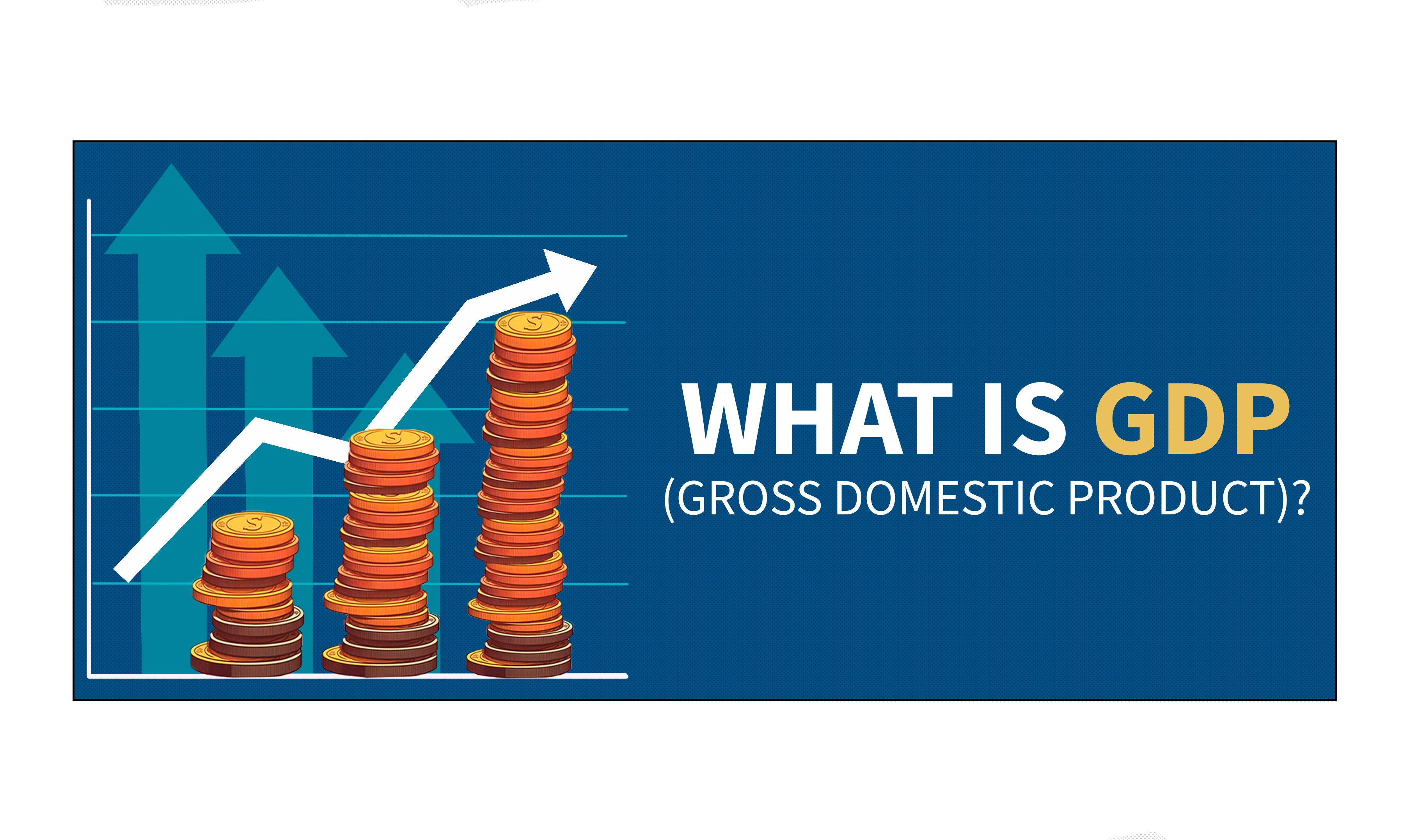
GDP is a measure of a company's output that is divided into various components. It is a significant metric as it provides insight into the size and well-being of an economy. Real GDP Growth is often used as a representation of the economy's health and is generally seen as a reliable indicator of the economy's condition.
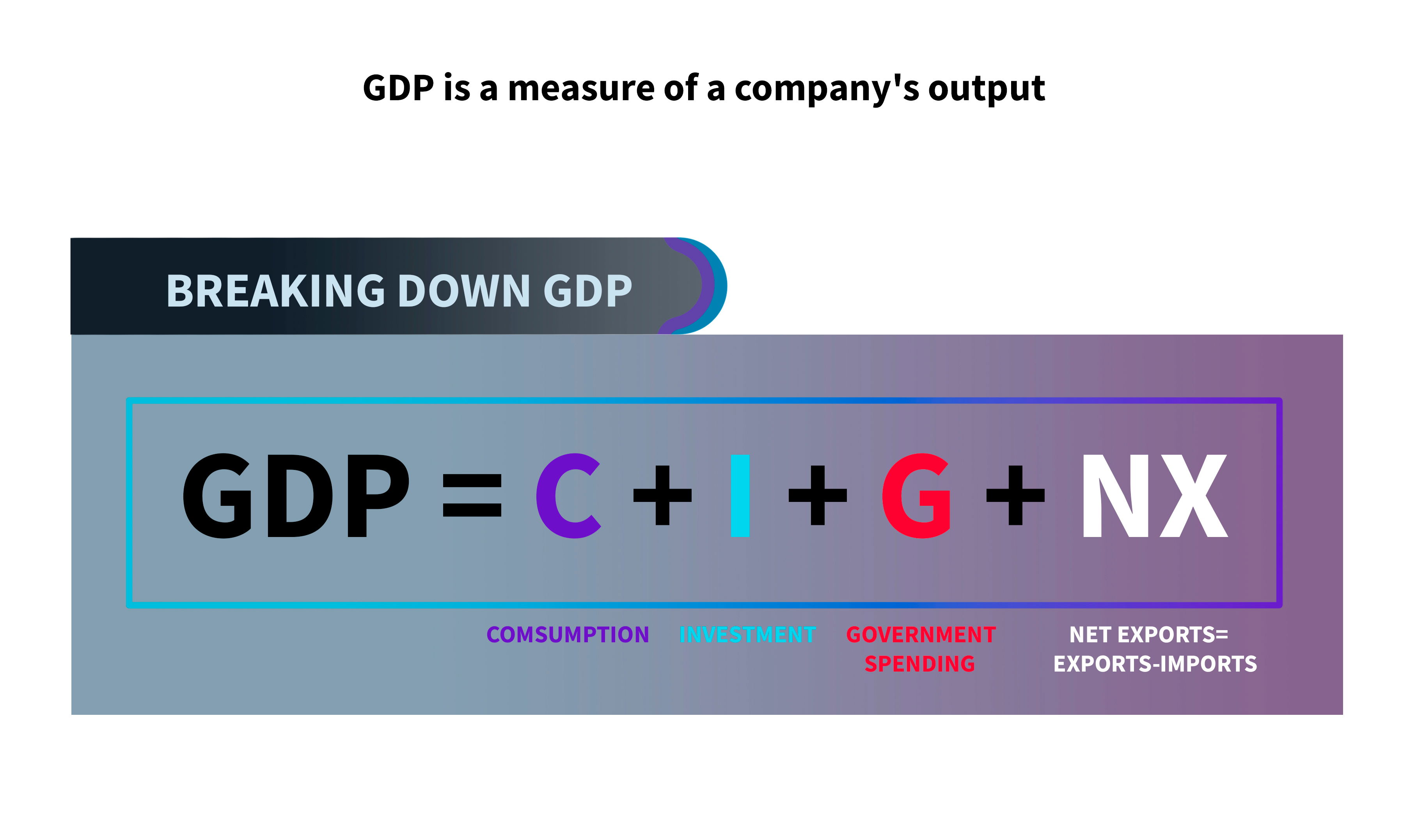
C is Consumption, so the individuals in a given economy like the US, how much they're consuming, are they buying goods services, etc. Nexus Investments, so aside from individuals, businesses are businesses investing in capital for expanding their productivity or expanding their capacity. That would be captured in the eye part of the GDP equation. There's also Government Spending. The government will make a budget for military spending or for programs like Medicare and Medicaid, all of which would be covered by the G part of the GDP equation.
Then the last bit is Net Exports, so that's exports minus imports. If a country is exporting more than it imports, that's going to be a positive contributor to GDP conversely. If it imports more than it exports that would be a minus 2 GDP.
Let's look at actually what the record looks like in the United States. Below is a picture of the real gross domestic product in the aggregate since 1950.
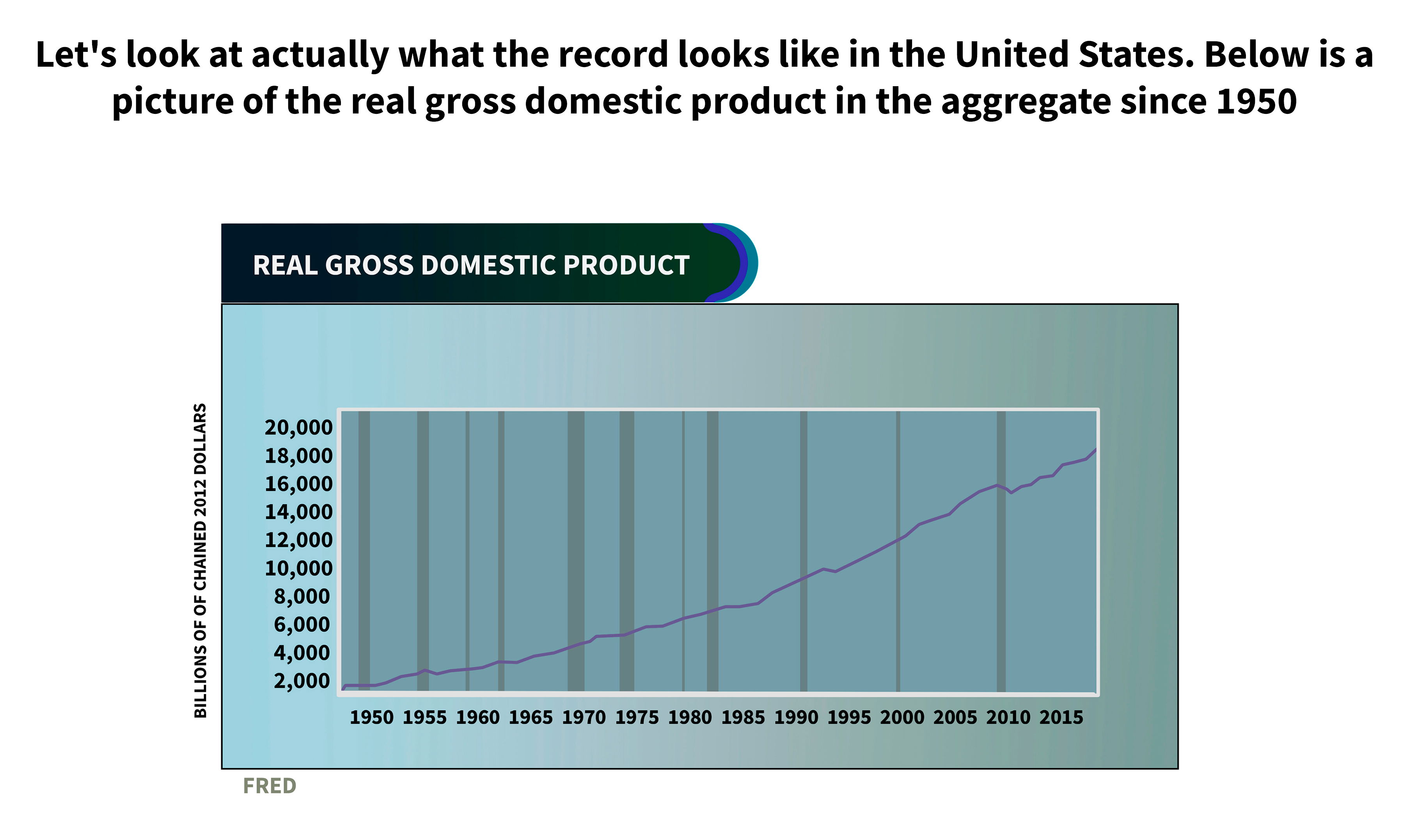
You can see that it's been steadily increasing over time, but this isn't just good enough. It's good that it's positive, but we want to make sure that the economy is growing at a steady rate. That's what you would expect to see in a country that has positive future prospects is actually economic growth.
If you take a look at it, you'll see that there there are portions of our economic history where we've actually seen some negative changes and we've seen some plateaus in the 1990s. That was the oil shock. We also saw in the 2000s, we had the dot-com bubble and then we actually had a negative shock in the obviously 2008 era with the collapse of the mortgage market. These all show us that we would have had negative GDP growth.
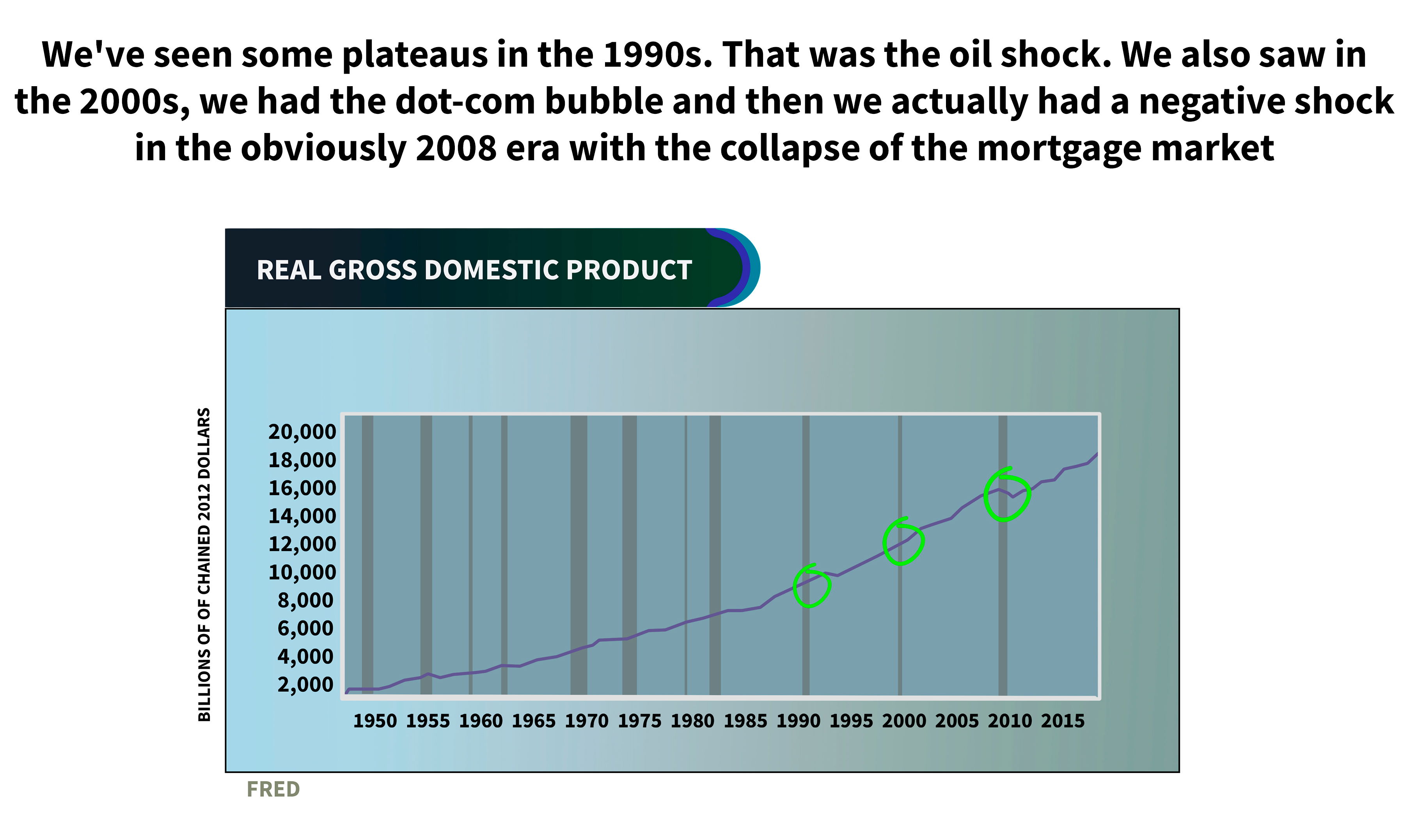
Let's look at the last 10 years of the economic recovery since 2009.
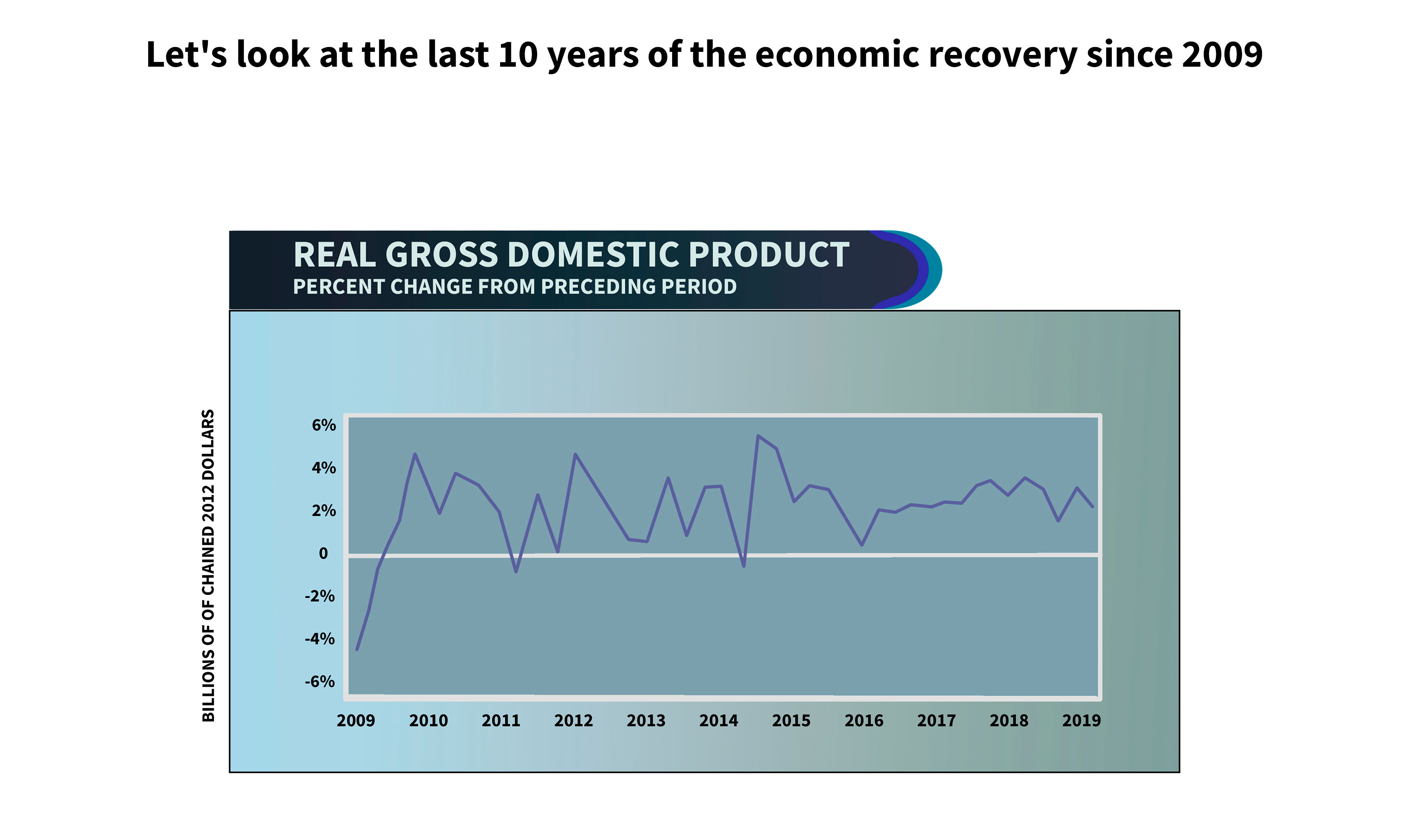
You could see that some of the remnants from the financial crisis have actually shown that we did have negative GDP growth for that year, but since then, it's been pretty steady.
A few bumps in late 2010, and also in mid-2014. However, for the most part, we've seen GDP stabilizing. You can see that it's been kind of on an upward trend in the 2015, 2016, and 2017 eras.
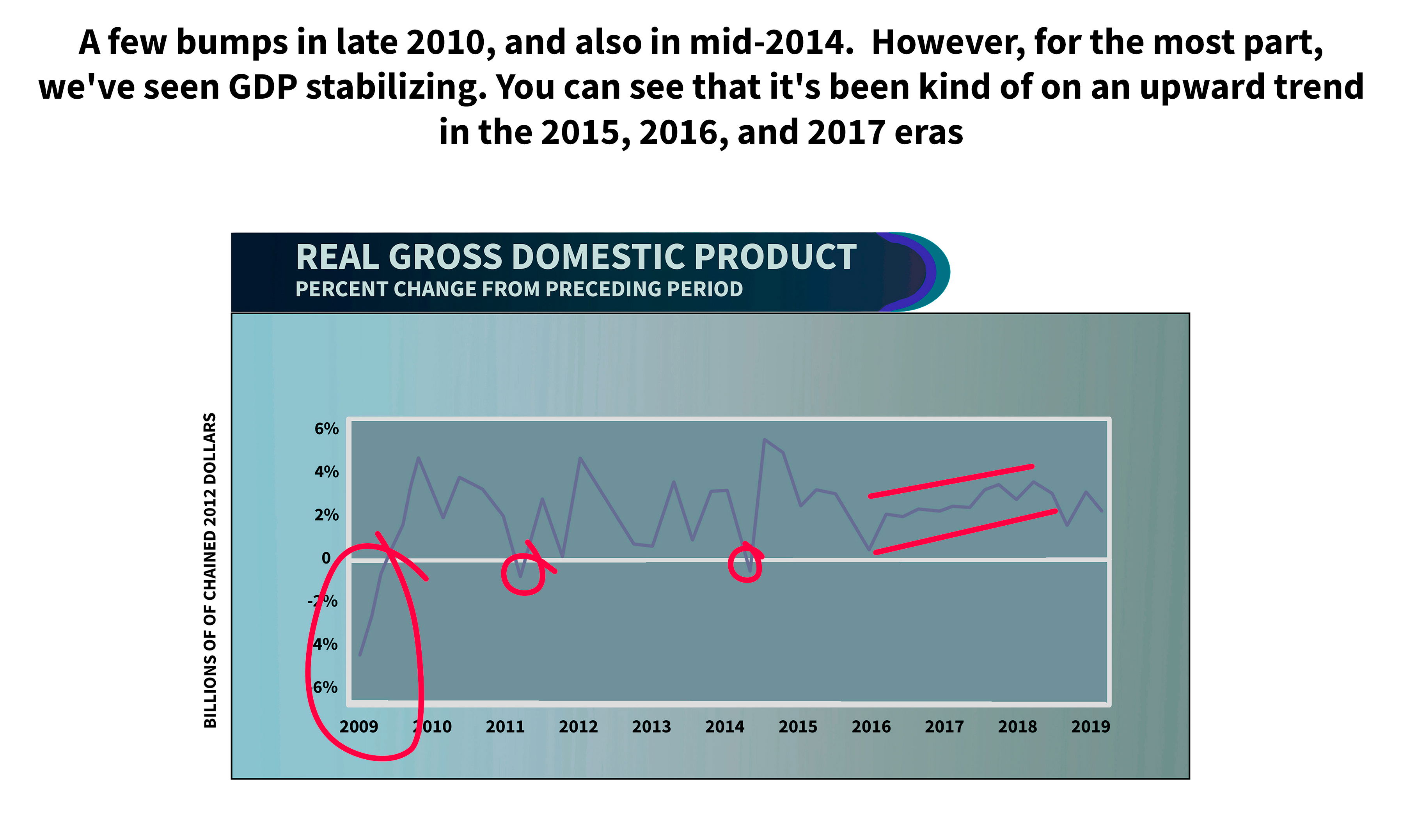
Keep in mind we are in the longest economic recovery right now which is kind of remarkable that we've been able to have this positive GDP growth. Let's say, 5 or 6 corners or so, whether or not that's starting to take down or raise concerns over about we're going to slow down again. Part of that slowing picture in other countries as well.
THINGS NOT ACCOUNTED FOR BY GDP
Unpaid Work
GDP is important to note because it actually doesn't include all components. One example is unpaid work. GDP will not account for things like under-the-table pay. If you're working at a restaurant, you get paid on the table and that will not get counted in GDP. However, it also accounts for things like raising a kid, that's work that actually represents a large substantial amount of time that isn't monetized and isn't added to the GDP equation.
Natural Resources
GDP only accounts for natural resources that are actually sold in an open market, like gasoline for example, or anything that's untapped would not be accounted for in GDP. Also, changes in populations. So in the aggregate, GDP might be increasing, but that could be just because there are more bodies to help produce things.
Happiness
Yes, there could be more GDP but that doesn't necessarily mean that people have better health, or that people are having better living wages.
Inequality
Yes, GDP is increasing but how do we know that all that wealth isn't concentrated at the top?
ALTERNATIVE MEASURES
What is Gross National Income?
There are alternative measures that have been pitched in this substitute to GDP, and one of them is gross national income. Gross national income actually accounts for spending in production but it actually measures it by income and actually accounts for income that might be made by Americans abroad that generally tends to overstate GDP. This is a reason why people don't look at it.
Human Development Index
It is used by the World Bank. This actually measures health schooling life expectancy some of those things that aren't accounted for.
Index of Sustainable Economic Welfare
It actually has different accounting for natural resources untapped. This actually tells you that it'll account for unpaid household labor, a social cost, and environmental damage.
GDP is not a perfect measure of how an economy is doing, but still pretty interesting nonetheless that there are other proposed alternatives to this.
Key Takeaways:
1. GDP is a reliable indicator of the economy's condition, which is calculated by dividing a company's output into various components.
2. GDP is composed of Consumption, Investment, Government Expenditures, and Net Exports.
3. GDP does not account for unpaid work, natural resources, happiness, inequality, or other factors.
4. Alternative measures to GDP include Gross National Income, Human Development Index, and Index of Sustainable Economic Welfare.



